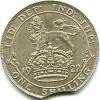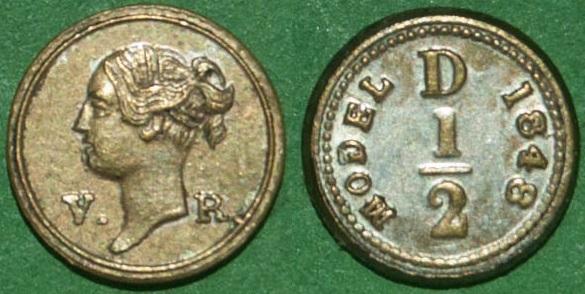-
Posts
12,742 -
Joined
-
Last visited
-
Days Won
339
Content Type
Profiles
Forums
Events
Downloads
Store
Gallery
Articles
Everything posted by Rob
-
https://www.arsclassicacoins.com/prices-realized/ 144 is the Roman and 145 the British
-

Canadian needs help on 2 pence
Rob replied to the canadian's topic in British Coin Related Discussions & Enquiries
Yep. Current scrap price for decimal bronze is about 3x face. Money to be made for someone. -

Minor GB Penny Queries 1899 narrow date 1880 higher 0 and 1889 Victoria's Nose
Rob replied to The Bee's topic in Free for all
The last digit was entered manually, whereas the first three are on the master. That's why you get varying date widths usually on the 3rd & 4th (not related to narrow and wide dates which are completely different. I know the coppers had a die with just 18, because one reading that went through Baldwin's, but I think by the time of the bronze coinage, it was normally the first three. So in summary, the 0 was just entered too high initially. -
Thanks Stuart. So basically minimal additions. What does the red dot mean? Interestingly, the first three listed were previously under his obverse 1 as 1a, 1b and unrecorded, but the first two in the earlier edition have the pellet in annulet on the centre of the reverse (S2385), unlike those paired with obverse 2 (S2426). In the case of 4-11, they are his 2a-h. I wonder why they have been grouped together? Better send Paul an email.
-

Minor GB Penny Queries 1899 narrow date 1880 higher 0 and 1889 Victoria's Nose
Rob replied to The Bee's topic in Free for all
I think they could possibly be different punches. The top one has a bit of a double chin, but the bottom not. The eyelids look a bit different, the mouth a bit deeper on the top one and nostril more hooked on the bottom one, but whether it's down to depth of strike, I'm not sure. -
I can buy that. It would explain the apparent displacement of the N(E). It would also explain the very thin line heading down to O flaw. I had discounted the N because of the well formed curve which seemed too horizontal for an N, the right leg which is leaning too far to the right at the top relative to the left leg and a small spur at the start of the thin line, all of which would be commensurate with a Lombardic E. Assuming an N, the tops of the two legs are inclined at 30 degrees to one another, but I guess a broken punch could deform into any random shape. The lump on the right I had assumed was just more of the poor surface. Thanks. Always good to have the perspective of multiple eyeballs.
-
Has anyone got the latest Withers book for this? It wasn't listed in the softback books. LONDON with an inverted G for the D and what appears to be an inverted lombardic E for the N. Whatever, N is the one thing it isn't. Unfortunately, the first N isn't clear. The O is also distinctive with a flaw emanating from the circle on both letters at 5 o'clock. This was out of Hosker Haynes sale a few days ago, and although not a thing of great beauty, it was too interesting to ignore.
-
VAT 10% will narrow down the date range a bit. Phone numbers changed from 01 to 071 & 081 in 1990ish? He was a regular buyer at auction based on the names noted against lots in catalogues. The middle one might be his. The number 41 (and 40) might be a case of the previous collector tying the tickets to a coin in their collection database. I have a 2x2 box full of tickets that don't fit the tray recesses, all neatly numbered with their numerical collection reference so they can be reconnected come the time for disposal.
-
Regarding David's post, I could go with Jameson too. You often see important sales of a similar coin referenced on tickets, but that doesn't always mean it was from that collection. Just look at the references of many lots in current sales to see things such as Brooker xxx same dies for Charles I, Adams for pennies, Schneider for hammered gold etc. The collection referenced is usually one of the major sales for the material in question. Unfortunately however, sometimes these get incorporated into the provenance of a sale lot, leading to ongoing confusion when checking and confirming a provenance. I got caught out recently on that very point. Mea culpa for not checking thoroughly in advance. Note that Jameson died in 1942 and the collection was sold post mortem, but the ticket says SPK 1941, i.e. it predates this. PTO means please turn over. TPP is T/-/- and looks to be a purchase price code in pounds shillings and pence. i.e T represents a number of pounds and the dashes zero shillings and pence. I'd say they are by a different hand. Although the M is similar, the P is completely different. The R is a bit misleading as it is a conjugated A&R (for silver) on the ticket in question. The lack of sale price would imply a coin sold before being priced and on the list and so a Spink ticket cannot be ruled out, but I don't think it is. The other ticket references the Sydenham sale at Glens in Dec. 1941, but I don't have this catalogue, nor the Nov. 1948 sale to check who bought what. Send Chris Perkins a PM to get approved. He doesn't pop by that often.
-

TPG coins required to sell a UK coin collection that's US based?
Rob replied to freewheels's topic in TPG Discussions
I'd say CNG as well for a US sale. It really depends on what is in the collection. A decent number of hammered pieces would probably appeal more to them. Given the US obsession with slabs, unless they are going to get 63 or better, you might be better off selling in the UK, but bear in mind that would attract 5% on the hammer price for UK buyers as the collection would be imported. Is there anything that would do well as a private sale? You also have to consider selling fees, but that would be negotiable. I guess a few phone calls would be in order. -
Can't help with the 1941 circular. I would assume the ticket is by the person who bought the coin from Spink in 1941 with his price code. Spink stock numbers at the time were numerically incrementing and carried over from year to year, so 1943 for example had stock numbers in the 17000 range and more likely to be recorded on a Spink ticket. IMO the SPK would be superfluous if it's a Spink ticket and would expect the selling price to be given. Codes are usually used for purchase cost. Below 277-239 could read AR 4 DCS? Silver Tetradrachm? Then Cat(alogue) Jourdan 1009? Searching Jourdan brings up CNG's Richard A Jourdan sale in 2020 and appropriate material, but nothing as described on the ticket. Presumably a different Jourdan sale or is Jourdan an old reference book? I'm not familiar with ancients collections past sales, so can't help with catalogues or names.
-
Timely reminder. Haven't listened to Land of Grey and Pink for a while. Rectified.
-
Credit where it's due. No reply to the emails, but the last two catalogues appeared in the post today. If anyone needs either I can reciprocate.
-
Sorted now. Thanks all.
-
I never tire of watching this. Amazing skill. https://www.youtube.com/watch?v=XC9YY1urT8Q
-
Prices were quite soft in general for the lower grade material and some of the varieties didn't do as well as I expected, but that's probably indicative of the market at the moment - it's pretty dead. I was underbidder on the 1817 I/S which surprised me that it had very little interest. It started at only 95 with the commission bids and it was just me and the single book bidder going for it. I wanted it for stock. I sold it to him for 480 in 2008 when there were 4 known and after I got my existing example as a replacement. I still only have 8 recorded in the database, but I guess if it isn't in the book it goes under the radar. There are more GEOE/Rs than that, and they tend to fly.
-
Looks Irish to me. For a start the legend above the crown begins with an E, not an R, so not Richard. And on the reverse, following TAS you have DVB. So I'd say Edward IV light cross and pellets coinage, Dublin. Spink ref. 6373G (old 6365) would fit, or D&F 136 if you prefer.
-
No response to emails, so still looking for the last sale.
-

Toy money query - what is it?
Rob replied to Rob's topic in British Coin Related Discussions & Enquiries
Based on the picture in the book, it should be sharper, and I'd say the 'point' is closer to the linear circle than in Rogers. Rogers notes that he has only included 4 varieties to Batty's 15, so maybe a Batty reference would be more appropriate for tying it down. -
I've got a Moore model 1/2d here which is closest to Rogers 257, but that specifically says the truncation is curved strongly to a point at the front - which this isn't. Clues please. Ta.
-
The SEGO unit went unsold today at Spink. Make them an offer - it's rare. I paid 1500 for mine a while back and the horse is not as good as that one. Link For comparison. It's a scan, so a bit flat.
-

Geoffrey Cope collection
Rob replied to Coppers's topic in British Coin Related Discussions & Enquiries
I had it down as a P1342, so clearly nothing that screamed proof in hand. -
It's the only candidate listed in 1963, but with the number of listings counted on your fingers and in one month only, I would find it hard to believe that they had no more Ed.1 pennies for a whole year. Also, the IIIe was listed at 15/-, so either it didn't sell and was repriced at a later date, or it's a different coin. But it wasn't in the April 64 list which was quite extensive, and the other thing not in its favour is that a purchase date in 1963 doesn't leave much time to include it in the January list prior to printing.
-
Anything on the other side of the Seaby ticket? No IIIds of Newcastle in either 63 or 64. One IIIe in January 1963 and a whole raft of Edward pennies in April 64, but not one was a Newcastle. There were only a handful of Ed.1 pennies listed in the whole of 1963, so suspect these were too common a type to bother with. They made a good profit on it.






